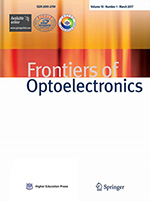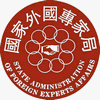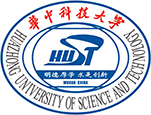Plenary Talks
DATE: 4/18/2018
Metasurfaces: from Structured Light to Flat Optics
Federico Capasso
Harvard University, USA
Harvard University, USA
ABSTRACT: Subwavelength structured surfaces known as metasurfaces are leading to a fundamental reassessment of optical design with the emergence of optical components that circumvent the limitations of standard ones and with entirely new functionalities such as the ability to shape wavefronts in unprecedented ways by means of flat optics. I will present recent advances on structured light: spin-to-total angular momentum converters (J-plates), which create complex helical beams with potential for applications in quantum optics and other fields, followed by resent research on polarization optics, broad band achromatic planar lenses and wavelength-controlled focusing and orbital angular momentum generation.
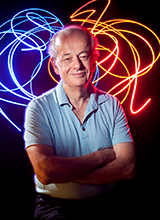 BIOGRAPHY: Federico Capasso is the Robert Wallace Professor of Applied Physics at Harvard University, which he joined in 2003 after 27 years at Bell Labs where his career advanced from postdoctoral fellow to Vice President for Physical Research. He has made wide ranging contributions to optics, photonics and nanotechnology, including pioneering the bandgap engineering technique, the invention of the quantum cascade laser, seminal research on metasurfaces, including the generalized Snel’s law and high performance metalenses, and fundamental research on the Casimir effect including the first measurement of the Casmir force. His awards include the Balzan Prize, the IEEE Edison Medal, the American Physical Society Arthur Schawlow Prize in Laser Science, the King Faisal Prize, the SPIE Gold Medal, the AAAS Rumford Prize, the IEEE Sarnoff Award, the Materials Research Society Medal, the Franklin Institute Wetherill Medal, the European Physical Society Quantum Electronics Prize, the Rank Prize in Optoelectronics, the Optical Society Wood Prize, the Berthold Leibinger Future Prize, the Julius Springer Prize in Applied Physics, the Institute of Physics Duddell Medal, the Jan Czochralski Award for lifetime achievements in Materials Science, and the Gold Medal of the President of Italy for meritorious achievement in science. He is a member of the National Academy of Sciences, the National Academy of Engineering, a fellow of the American Academy of Arts and Sciences (AAAS) and a foreign member of the Accademia dei Lincei.
BIOGRAPHY: Federico Capasso is the Robert Wallace Professor of Applied Physics at Harvard University, which he joined in 2003 after 27 years at Bell Labs where his career advanced from postdoctoral fellow to Vice President for Physical Research. He has made wide ranging contributions to optics, photonics and nanotechnology, including pioneering the bandgap engineering technique, the invention of the quantum cascade laser, seminal research on metasurfaces, including the generalized Snel’s law and high performance metalenses, and fundamental research on the Casimir effect including the first measurement of the Casmir force. His awards include the Balzan Prize, the IEEE Edison Medal, the American Physical Society Arthur Schawlow Prize in Laser Science, the King Faisal Prize, the SPIE Gold Medal, the AAAS Rumford Prize, the IEEE Sarnoff Award, the Materials Research Society Medal, the Franklin Institute Wetherill Medal, the European Physical Society Quantum Electronics Prize, the Rank Prize in Optoelectronics, the Optical Society Wood Prize, the Berthold Leibinger Future Prize, the Julius Springer Prize in Applied Physics, the Institute of Physics Duddell Medal, the Jan Czochralski Award for lifetime achievements in Materials Science, and the Gold Medal of the President of Italy for meritorious achievement in science. He is a member of the National Academy of Sciences, the National Academy of Engineering, a fellow of the American Academy of Arts and Sciences (AAAS) and a foreign member of the Accademia dei Lincei..............................................
Fano Photonics for Improving Lasers, Optical Signal Processing and Quantum Technology
Jesper Mørk
Technical University of Denmark, Denmark
Technical University of Denmark, Denmark
ABSTRACT: In this talk I will describe the use of Fano resonances for improving the properties of integrated opto-electronic devices. A Fano resonance arises by the interaction of a continuum of modes and a discrete mode and can be implemented in photonic crystal membranes by coupling line-defect waveguides and point-defect cavities. The resonance can be exploited to realize self-pulsing and ultrafast Fano lasers, non-reciprocal elements, devices for all-optical signal processing, and pulse carvers. Within quantum technology, the Fano resonance may be exploited to suppress de-coherence, e.g. with application in single-photon sources.
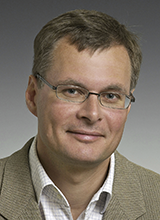 BIOGRAPHY: Jesper Mørk received the M.Sc., Ph.D., and Dr. Techn. degrees from the Technical University of Denmark (DTU), Lyngby, in 1986, 1988, and 2003, respectively. He became Professor in Nanophotonics at DTU in 2002 and is heading the Nanophotonics Section at DTU Fotonik since 2008. He is the author of more than 250 papers in refereed journals and around 350 contributions to international conferences, including more than 80 invited talks. His current research interests include semiconductor quantum photonics, active photonic crystals, nanolasers and integrated photonics. Jesper Mørk is a Fellow of OSA and serves as Associate Editor of Optica.
BIOGRAPHY: Jesper Mørk received the M.Sc., Ph.D., and Dr. Techn. degrees from the Technical University of Denmark (DTU), Lyngby, in 1986, 1988, and 2003, respectively. He became Professor in Nanophotonics at DTU in 2002 and is heading the Nanophotonics Section at DTU Fotonik since 2008. He is the author of more than 250 papers in refereed journals and around 350 contributions to international conferences, including more than 80 invited talks. His current research interests include semiconductor quantum photonics, active photonic crystals, nanolasers and integrated photonics. Jesper Mørk is a Fellow of OSA and serves as Associate Editor of Optica..............................................
Quantum Mechanics with Patterns of Light
Andrew Forbes
University of the Witwatersrand, South Africa
University of the Witwatersrand, South Africa
ABSTRACT: In this talk I will provide an overview of recent advances in the field of high-dimensional quantum entanglement and its many applications. I will explore the use of spatial modes of light, patterns of light, as a new basis for encoding information at both the classical and quantum regimes, and show the power this brings for secure and fast communication networks. Finally, I will show how carefully engineered structured light can blur the classical-quantum divide, opening new avenues to explore in the future.
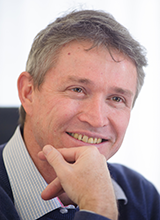 BIOGRAPHY: Andrew received his PhD (1998) from the University of Natal (South Africa), and subsequently spent several years working as an applied laser physicist, first for the South African Atomic Energy Corporation and then later in a private laser company where he was Technical Director. In 2004 he joined the CSIR National Laser Centre where he was Chief Researcher and Research Group Leader of the Mathematical Optics group. In March 2015 Andrew joined the U. Witwatersrand as a Distinguished Professor and has established a new laboratory for Structured Light. Andrew chairs or serves on the committees of several international conferences, OSA and SPIE committees, and serves on the editorial boards of Optics Express and J. Optics. He has published more than 300 scientific papers, several patents, and spends considerable time popularising photonics to the public through television, radio and the media. He is active in promoting photonics in Africa, a foundingmember of the Photonics Initiative of South Africa, a Fellow of both SPIE and the OSA, and an elected member of the Academy of Science of South Africa. In 2015 Andrew won a national award for his contribution to photonics in Africa. He spends his time having fun with the taxpayers’ money, exploring structured light in lasers, quantum optics and classical optics.
BIOGRAPHY: Andrew received his PhD (1998) from the University of Natal (South Africa), and subsequently spent several years working as an applied laser physicist, first for the South African Atomic Energy Corporation and then later in a private laser company where he was Technical Director. In 2004 he joined the CSIR National Laser Centre where he was Chief Researcher and Research Group Leader of the Mathematical Optics group. In March 2015 Andrew joined the U. Witwatersrand as a Distinguished Professor and has established a new laboratory for Structured Light. Andrew chairs or serves on the committees of several international conferences, OSA and SPIE committees, and serves on the editorial boards of Optics Express and J. Optics. He has published more than 300 scientific papers, several patents, and spends considerable time popularising photonics to the public through television, radio and the media. He is active in promoting photonics in Africa, a foundingmember of the Photonics Initiative of South Africa, a Fellow of both SPIE and the OSA, and an elected member of the Academy of Science of South Africa. In 2015 Andrew won a national award for his contribution to photonics in Africa. He spends his time having fun with the taxpayers’ money, exploring structured light in lasers, quantum optics and classical optics..............................................
Optoelectronic Properties of Two-Dimensional Transition Metal Carbides (MXenes)
Yury Gogotsi
Drexel University, USA
Drexel University, USA
ABSTRACT: Two-dimensional (2D) materials with thicknesses of a few nanometers or less continue to be explored in optical, photonic, and plasmonic applications due to their diverse properties compared to their bulk counterparts. A large family of 2D materials, known as transition metal carbides and/or nitrides (MXenes), have a general formula of Mn+1XnTx, where M represents a transition metal (Ti, Mo, Nb, V, Cr, etc.), X is either carbon and/or nitrogen, and Tx represents surface terminations. The first discovered and most studied MXene, titanium carbide (Ti3C2Tx), can be produced in large quantities (about 100 g per batch) and high concentrations (up to 100 g/L). In addition, Ti3C2Tx has shown high conductivity at high transparency (10 000 S/cm, >97% transparency per-nanometer), an optical plasmonic peak in near-infrared range (750-800 nm), suggesting it suitable as a photothermal therapy agent, transparent conductor, SERS substrate, as a metamaterial, light to heat transforming material, etc.
With the family of materials containing about 30 different synthesized compositions so far (and millions possible), optimization and light-matter characterization of MXene compositions beyond Ti3C2Tx remains critical. For example, thinner M2XTx MXene structures, such as Ti2CTx, exhibit an optical absorbance peak shift to the visible range (~550 nm), demonstrating the optic/electronic differences from similar-but-thicker structures, such as Ti3C2Tx.6 This talk will provide insight into the optical properties and potential applications of MXenes as well as spectroscopic information which can be applied to designing next-generation photonic and optoelectronic devices, such as photodetectors, random or femtosecond lasers, electro-chromic devices, photonic diodes, metamaterials, and more.
With the family of materials containing about 30 different synthesized compositions so far (and millions possible), optimization and light-matter characterization of MXene compositions beyond Ti3C2Tx remains critical. For example, thinner M2XTx MXene structures, such as Ti2CTx, exhibit an optical absorbance peak shift to the visible range (~550 nm), demonstrating the optic/electronic differences from similar-but-thicker structures, such as Ti3C2Tx.6 This talk will provide insight into the optical properties and potential applications of MXenes as well as spectroscopic information which can be applied to designing next-generation photonic and optoelectronic devices, such as photodetectors, random or femtosecond lasers, electro-chromic devices, photonic diodes, metamaterials, and more.
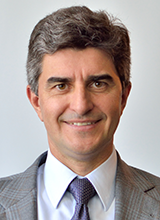 BIOGRAPHY: Dr. Yury Gogotsi is Distinguished University Professor and Trustee Chair of Materials Science and Engineering at Drexel University. He also holds appointments in the Departments of Chemistry and Mechanical Engineering and Mechanics at Drexel University and serves as Director of the A.J. Drexel Nanotechnology Institute. He served as Associate Dean of the College of Engineering from 2003 to 2007. He received his MS (1984) and PhD (1986) degrees from Kiev Polytechnic and a DSc degree from the Ukrainian Academy of Sciences in 1995. His research group works on various nanostructured carbons and other nanomaterials. He has co-authored 2 books , edited 13 books, 16 book chapters, more than 550 papers in peer-reviewed journals including more than 20 papers in Nature family journals and Science, about 100 papers in conference proceedings, more than 55 patents filed (many licensed to industry), delivered more than 200 invited lectures and seminars. He has been cited over 70,000 times (Google Scholar) and currently has an H-index of 122 (Google Scholar) / 100 (Web of Science).
BIOGRAPHY: Dr. Yury Gogotsi is Distinguished University Professor and Trustee Chair of Materials Science and Engineering at Drexel University. He also holds appointments in the Departments of Chemistry and Mechanical Engineering and Mechanics at Drexel University and serves as Director of the A.J. Drexel Nanotechnology Institute. He served as Associate Dean of the College of Engineering from 2003 to 2007. He received his MS (1984) and PhD (1986) degrees from Kiev Polytechnic and a DSc degree from the Ukrainian Academy of Sciences in 1995. His research group works on various nanostructured carbons and other nanomaterials. He has co-authored 2 books , edited 13 books, 16 book chapters, more than 550 papers in peer-reviewed journals including more than 20 papers in Nature family journals and Science, about 100 papers in conference proceedings, more than 55 patents filed (many licensed to industry), delivered more than 200 invited lectures and seminars. He has been cited over 70,000 times (Google Scholar) and currently has an H-index of 122 (Google Scholar) / 100 (Web of Science).He has received several awards for his research including the International Nanotechnology Prize (RUSNANO Prize), NANOSMAT Prize, Nano Energy Award (Elsevier), The European Carbon Association Award, S. Somiya Award from the International Union of Materials Research Societies, G.C. Kuczynski Prize from the International Institute for the Science of Sintering, R. Snow Award from the American Ceramic Society (five times), I.N. Frantsevich Prize from the Ukrainian Academy of Science, R&D 100 Award from R&D Magazine (twice) and two NanoTM 50 Awards from NASA Nanotech Briefs. He has been elected a Fellow of the American Association for Advancement of Science (AAAS), International Society of Electrochemistry, Royal Society of Chemistry, Materials Research Society, American Ceramic Society, the NANOSMAT Society, the Electrochemical Society, as well as Academician of the World Academy of Ceramics and Full Member of the International Institute for the Science of Sintering.
.............................................
PerovLight: Halide Perovskite Materials for Nanophotonics and Polaritonics
Qihua Xiong
Nanyang Technological University, Singapore
Nanyang Technological University, Singapore
ABSTRACT: Halide perovskite materials have attracted considerable attention recently due to their excellent optical gain properties, balanced electron/hole diffusion, large exciton binding energy and facile synthesis. In this talk, I will discuss our recent effort in probing light-matter interactions in halide perovskite materials from weak coupling regime to strong coupling regime at room temperature towards high performance nanophotonics and polaritonics. I will first introduce vapor-phase grown high quality perovskite crystals for optically pumped photonic lasing based on the intrinsic whispering gallery mode cavity. The lasing quality factor can be as high as 5000 in all-inorganic perovskite crystals. Next, I will present our recent experimental realization of room-temperature polariton lasing in all-inorganic perovskite crystals embedded in two distributed Bragg reflectors. The polariton lasing is evidenced by a superlinear power dependence, macroscopic ground state occupation, and increase of the temporal coherence. Such polariton condensate propagation at room temperature can be further manipulated in 1D perovskite microwires. An ultrafast polariton propagation velocity of > 10 µm/ps was observed at room temperature. Finally, in will introduce our recent breakthrough in perovskite LED devices. Our work advocates the considerable promise of perovskite materials for room temperature nanophotonics and ultrafast polaritonics.
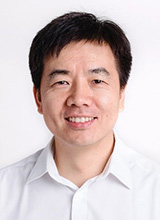 BIOGRAPHY: Qihua Xiong received his B.S. degree in physics from Wuhan University in 1997, and then finished three years graduate studies at the Shanghai Institute of Applied Physics, Chinese Academy of Sciences. He went to the United States in 2000 and received Ph.D. degree under the supervision of Prof. Peter C. Eklund from The Pennsylvania State University in 2006. After three years postdoctoral experience in Prof. Charles M. Lieber’s group at Harvard University, he joined Nanyang Technological University as an assistant professor in 2009 and promoted to Nanyang Associate Professor in 2014. He was promoted to full Professor in 2016 recently. He is a Fellow of Singapore National Research Foundation awarded in 2009 and the inaugural NRF Investigatorship Award by Singapore National Research Foundation in 2014. He is the recipient of IPS Nanotechnology Physics Award (2015) and Nanyang Award for Research Excellence of NTU (2014). Dr. Qihua Xiong’s research is motivated by the understanding of the light-matter interactions in quantum matter by steady-state and transient optical spectroscopy. His group is notable for recent breakthrough discovery of laser cooling of semiconductors and sideband Raman cooling of optical phonons, as well as the low-frequency shear and breathing modes, and the correlated fluorescence blinking in 2D layered semiconductor materials and heterostructures. Most recently, Dr. Xiong has ventured into the field of strong light-matter interactions in 2D semiconductors and perovskite crystals, with the recent demonstration of room temperature exciton polariton Bose Einstein condensate and lasing in perovskite crystals. Dr. Xiong has published more than 190 papers, which attracted more than 8300 times citation with an H-index of 54. His outstanding achievement has been recognized by a few prestigious awards, such as IPS Nanotechnology Physics Award (2015), Singapore National Research Foundation Inaugural Investigatorship (NRFI) Award (2014) and Nanyang Award for Research Excellence by NTU (2014). Since April 2018, he was appointed as the Associate Editor for Optics Express, the flagship open-access journal by Optical Society of America. He was elected Fellow of American Physical Society in September 2018.
BIOGRAPHY: Qihua Xiong received his B.S. degree in physics from Wuhan University in 1997, and then finished three years graduate studies at the Shanghai Institute of Applied Physics, Chinese Academy of Sciences. He went to the United States in 2000 and received Ph.D. degree under the supervision of Prof. Peter C. Eklund from The Pennsylvania State University in 2006. After three years postdoctoral experience in Prof. Charles M. Lieber’s group at Harvard University, he joined Nanyang Technological University as an assistant professor in 2009 and promoted to Nanyang Associate Professor in 2014. He was promoted to full Professor in 2016 recently. He is a Fellow of Singapore National Research Foundation awarded in 2009 and the inaugural NRF Investigatorship Award by Singapore National Research Foundation in 2014. He is the recipient of IPS Nanotechnology Physics Award (2015) and Nanyang Award for Research Excellence of NTU (2014). Dr. Qihua Xiong’s research is motivated by the understanding of the light-matter interactions in quantum matter by steady-state and transient optical spectroscopy. His group is notable for recent breakthrough discovery of laser cooling of semiconductors and sideband Raman cooling of optical phonons, as well as the low-frequency shear and breathing modes, and the correlated fluorescence blinking in 2D layered semiconductor materials and heterostructures. Most recently, Dr. Xiong has ventured into the field of strong light-matter interactions in 2D semiconductors and perovskite crystals, with the recent demonstration of room temperature exciton polariton Bose Einstein condensate and lasing in perovskite crystals. Dr. Xiong has published more than 190 papers, which attracted more than 8300 times citation with an H-index of 54. His outstanding achievement has been recognized by a few prestigious awards, such as IPS Nanotechnology Physics Award (2015), Singapore National Research Foundation Inaugural Investigatorship (NRFI) Award (2014) and Nanyang Award for Research Excellence by NTU (2014). Since April 2018, he was appointed as the Associate Editor for Optics Express, the flagship open-access journal by Optical Society of America. He was elected Fellow of American Physical Society in September 2018. 
